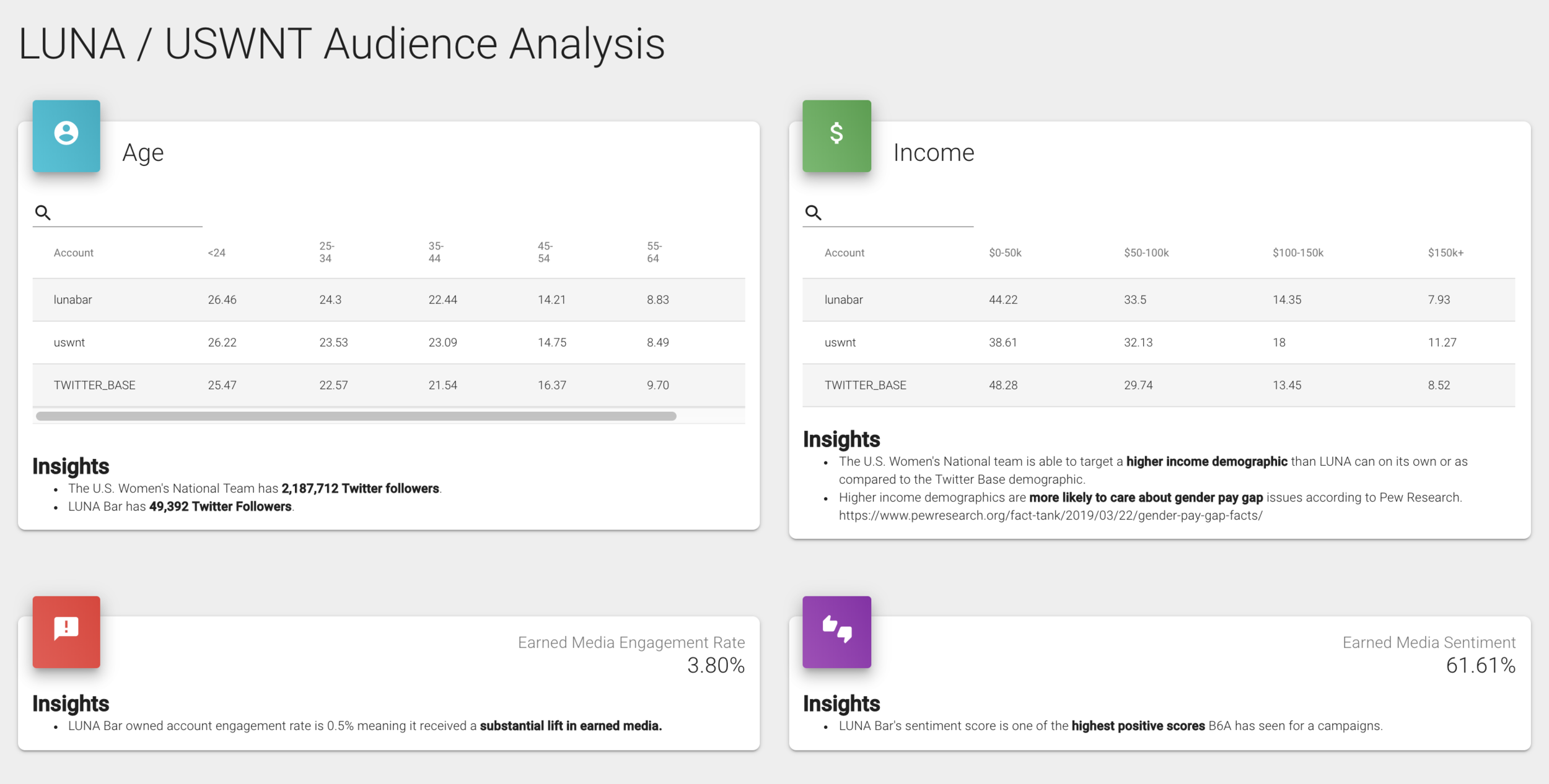LUNA Bar Scores With Equal Pay Partnership
BY ADAM GROSSMAN
Arguably the biggest news coming from national Equal Pay Day on Tuesday was LUNA Bar decision to pay each of the 23 players that made the final 2019 United States Women’s National Team (USWNT) World Cup roster $31,250. This enables the USWNT players to be paid an equal amount to their counterparts on the United States Men’s National Team for participating in the World Cup.
LUNA Bar’s decision is another example of how the increase in cause marketing continues to impact the sports industry. We examined Gillette’s “the best a man can be” campaign and how companies are more frequently taking positions on social, political, and / or moral issues they have usually shied away from in the past in a previous post. Companies were afraid that taking “sides” on an issue could alienate large swaths of current / potential customers who may not agree with their position.
More recently, companies such as LUNA have seen these issues as ways to differentiate themselves from the competition particularly in competitive categories where brand differentiation is difficult to achieve. For example, LUNA competes in the “bar market” where “a casual observer…may conclude that these brands seem pretty interchangeable.”
Cause marketing enables these companies to achieve becoming not “interchangeable” by taking tangible actions on an issue important to their core customers. As Clif Bar & Company (makers of LUNA Bars) Owner and Co-CEO Kit Crawford said, “We are big fans of the U.S. Women’s National Team and were inspired to take action and make a difference that matters. LUNA Bar is honored to give these women, and women everywhere, our support. It’s what is right, but more importantly, it’s what they deserve.”
Sports provides unique opportunities for companies looking for cause marketing to develop partnerships because of the spotlight it can bring to issues. One piece of evidence supporting USWNT players’ claims that they deserve equal pay relative to the USMNT are the television ratings during the event. More specifically, the 25.4 million viewers for the 2015 Women’s World Cup final made it “the most-viewed soccer game ever in the United States–men’s or women’s–by a giant margin” at the time.
Recognizing that the USWNT are the “firm favorites” to win again this year means that the team is likely to attract to similar attention. By being a partner of the USWNT, LUNA Bar has a direct platform to reach a large portion of its target audience in ways its competitors cannot. While Block Six Analytics (B6A) obviously does not endorse having a gender pay gap to create a partnership opportunity, this is a clear example of the unique value proposition that sports can provide for companies looking to use cause marketing as a brand differentiator.
How did LUNA’s customers respond? B6A does see direct lifts in sentiment, engagement and overall value. We used our Social Sentiment Analysis Platform (SAP) to understand LUNA Bar’s and the USWNT’s core demographics and listen to the conversation about the announcement. The results from our Partnership Scoreboard are below.
This analysis shows that the USWNT audience overlaps significantly with LUNA Bar’s audience and was clearly engaged in the conversation surrounding this announcement. Moreover, the USWNT now has tangible, quantifiable evidence of how it helped LUNA Bar create brand differentiation to a higher number of its target customers in a highly competitive market through its partnership.
While seemingly entirely positive, LUNA Bar’s decision to close the gender pay gap for the USWNT does not come without risk. As The Daily Beast’s Lizzie Crocker said after the USWNT won the 2015 Women’s World Cup, “Women deserve to be treated equally in all fields. But the sports pay gap isn’t a big, sexist conspiracy. In the current economic environment, it’s not at all unfair that female athletes make less than their male counterparts. It’s simply a matter of supply and demand.”
This market-based approach to addressing these types of issues is similar to the criticism Gillette received for its cause marketing campaign. Regardless of one’s position on the gender pay gap or other issue issues, it is clear that companies are going to continue to invest in cause marketing to create brand differentiation and stronger relationships with their customers. The data shows that the sports industry is well positioned to be a primary channel for this type of investment.

